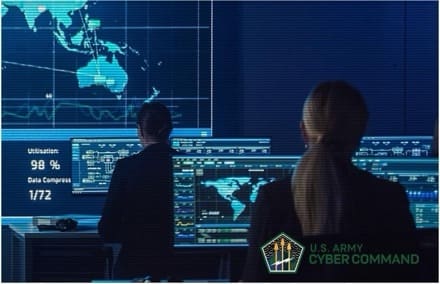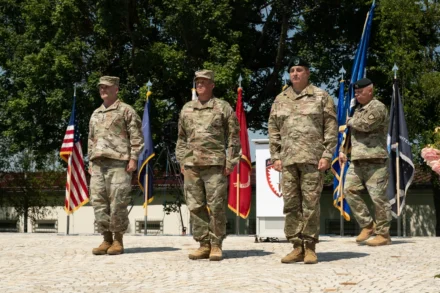LANSING, Mich. – Joining the Army is tough; you’re immediately off to basic and individual training, facing drill sergeants, and learning the basics of soldiering. Going straight to Ranger School after that? That’s an entirely new level of challenge and excellence.

No Michigan Army National Guard Soldier accomplished all three schools through the Ranger Team Leader Initiative program — until now. On June 21st, 19-year-old Pfc. Chase Cammenga achieved this milestone, graduating from all three rigorous training programs.
The RTLI is a specialized training program for enlisted Soldiers in the Army National Guard who aspire to attend Ranger School. This program transitions Soldiers from initial training to the Ranger Training Assessment Course (RTAC) and then directly to Ranger School. The program scouts for top National Guard Soldiers, selecting those with the highest potential to succeed in the challenging Ranger course.
When Cammenga enlisted in the National Guard two years ago in November while still in high school, his ambition to pursue advanced military training was a driving force behind his decision.
“I wanted to challenge myself and be in the best fighting force on the planet,” he said.
Cammenga was initially set on the active-duty route until a friend introduced him to the National Guard. He discovered the Guard offered a balance between military service and pursuing higher education, with educational benefits such as tuition assistance and the GI Bill.
“One of my buddies joined, and I figured this was a good way for me to do both. I could be in the National Guard and still serve while I’m going to college,” he said.
Cammenga embarked on his initial training. The fear of the unknown was daunting, and his One Station Unit Training experience was no exception. OSUT consolidates Basic Combat Training and Advanced Individual Training at one location.
“It was hard because it was the first time I was away from my family for that long. The training was different from anything I’d ever done before,” he recalled.
Cammenga’s determination to excel in training was driven by a desire to be a member of a team. He chose the infantry military occupational specialty of 11B.
“I’ve always wanted to be the best, but more than that, I want to be able to help those around me,” he said. This mindset was particularly evident during Ranger School.
As his time at OSUT ended, he was identified as a standout candidate based on factors such as his PT score of 584 out of 600 points. He earned a spot in the RTLI program.
“I was pretty excited,” he said. “Going to Ranger School wasn’t always a dream, but once I heard more about it, I knew it was what I wanted to do.”
Cammenga’s journey to earning the Ranger tab began with rigorous RTAC training. The 30-day course prepares enlisted Guard members for the Army National Guard “pre-Ranger” course, called the Ranger Training Assessment Course. RTAC lasts 17 days, and all Army National Guard members must complete it before heading to Ranger School.
“In RTAC, the training was incredibly tough. It made us think, ‘If this is hard, just imagine what Ranger School will be like.’ But we always supported each other and lifted each other up,” said Cammenga.
Once RTAC was completed, Cammenga was ready for Ranger School. For more than two months, Ranger students train to exhaustion, pushing the limits of their minds and bodies.
Reflecting on his journey, Cammenga emphasizes the importance of camaraderie and support. “You don’t get your tab; your buddies get it for you. I learned that I had to lean on those around me.”
Recycling during training is a common challenge; for Cammenga, it was no different. Darby, the first phase of Ranger School, was a hyper-structured environment where attention to detail was paramount.
“The instructors were different, with different criteria. It was all about doing everything by the book,” said Cammenga.
Feeling that sinking sensation in his stomach when he realized he had to do Darby again was tough, but he kept telling himself he wasn’t a quitter.
“I felt like I couldn’t go on, but I learned to dig deep and find that inner strength,” he said.
With dedication and hard work, Cammenga passed Darby and moved to the next phase. For Cammenga, the training presented significant challenges, especially the lack of sleep and food for more than 62 days.
“The lack of sleep was the most difficult part for me,” said Cammenga. “There were times I found myself falling asleep while walking. On average, we got about an hour to an hour and a half of sleep a night.” Despite these hardships, he stayed motivated by reminding himself, “At least I’m not in Darby. I can get this done.”
During Ranger School, one mentor, a fellow Soldier in his platoon, had a profound impact on Cammenga.
“He told me that people here will do anything for you; you just have to ask,“ Cammenga said. “His words inspired me to be more patient and to help others wherever I could.“
Cammenga pushed through 12-mile rucks, completed water survival training, navigated difficult terrain, and led battle drills.
“Failure was not an option. I pushed myself harder than I ever thought possible,” he said.
His perseverance paid off when he completed Ranger School and earned the coveted Ranger tab.
“It was one of the proudest moments of my life. All the hard work and sacrifices had finally paid off,” he said.
After Ranger School, he attended airborne school. The training further honed his skills and prepared him for future missions.
“My parents always encouraged me to follow my dreams and never give up,” he said. “During training, they wrote me letters and offered incredible support. Their encouragement was a big part of what kept me going.”
By 2LT Paige Bodine, 126th Theater Public Affairs Support Element




































































































































